Candy Land, Dark Glasses, Lola, She Came From The Woods, Something In The Dirt
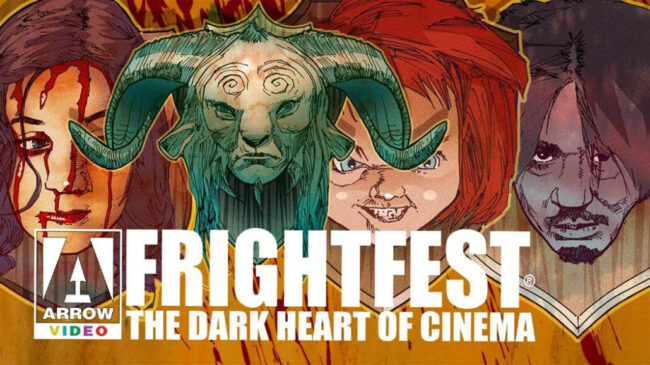
Day three, so you know the drill. Here’s a rundown of the things I watched at FrightFest. Another decent day, and it was particularly thrilling to be in the audience for Dario Argento – even for a subpar movie. But more on that later. First…
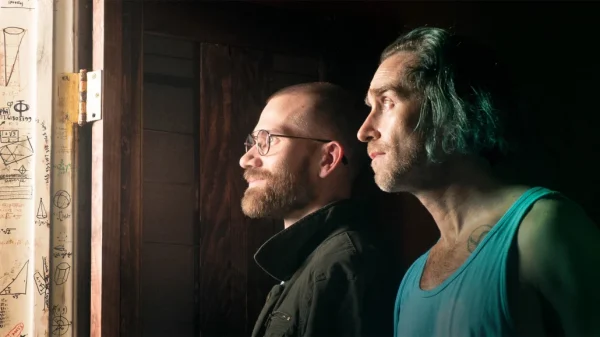
SOMETHING IN THE DIRT
Directed by Justin Benson and Aaron Moorhead
Fresh from working on Marvel shows, long-term collaborators Justin Benson and Aaron Moorhead return to their roots with a low-budget supernatural horror. They feature as two neighbours, John and Levi, who witness supernatural events in their LA apartment block – a weird place where a 90-year-old granny once threw grampa out the window. This flick is their usual combo of mumbly character drama and innovative shoestring sci-fi, but now with heaps more black comedy. And, for me, it’s their most successful and consistent effort to date – perhaps their least focused but also their most personal. Both play their parts to perfection, which is just as well considering 99% of the movie is them talking in rooms, cars and courtyards. John is understated and potentially psychopathic, while Levi is, to paraphrase John, a fuck up and a criminal with a low IQ.
While their relationship is far from harmonious, it’s with some camaraderie that these two misfits enter into a spider web of misdirection and coincidences. This is a minimalist, contained film (partially due to Covid) that begins with two guys watching a floating ashtray but expands and expands until there are cosmic implications. The story, or at least what appears to be going on, is engaging, and what watches like semi-improvised naturalistic dialogue helps to ground the increasingly far-out concepts in something emotionally real. The threat to Levi’s mental health, and our uncertainty about who he is, make for dramatic stakes. Moreover, framing their project as two guys trying to get their voices out there in LA makes them endearing underdogs. As indy filmmakers themselves, one gets the impression this is Benson and Moorehead reflecting upon and deconstructing their processes, partnership, and reasons for doing this.
However, while it seems true to life that the threads only add up to more threads, as it goes on, the lack of progress makes for frustrating, even overwhelming viewing. There is no next, only more of the mystery. So as the third act starts and the conspiracy seems to extend to everything from the building’s design to recurring numbers and human visual processing, viewers may feel further from a resolution than before. Fortunately, the characters are strong enough to compensate for this, and they get some of their best moments towards the end when the tensions between them build. There’s plenty of foreshadowing and little clues about each man’s true motive smattered through the movie, so the escalation is organic. It’s a testament to them as actors that they can play to the darkness in their characters and immediately go back to making you love them. This may not be the best entry point for new viewers – go see Spring instead. But it’s a rewarding watch for their growing fanbase and well worth building up to. A superb start to the day.
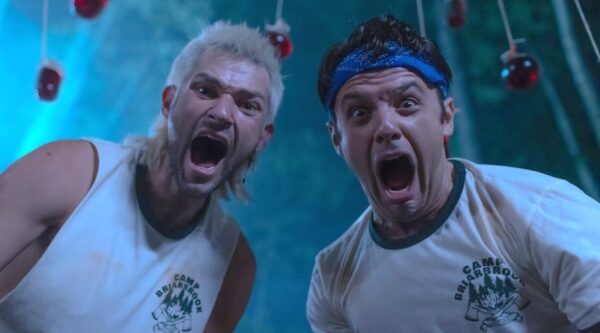
SHE CAME FROM THE WOODS
Directed by Erik Bloomquist
One I wasn’t particularly looking forward to – not because it looked terrible per se, but because I’m not huge on horror-comedy or 80s kitsch. Still, it was a pleasant surprise. And while the director’s evident love of slasher classics shines through, it’s still its own thing. It’s a coming-of-age throwback to the 80s in which a group of counsellors looking for fun accidentally unleash a decades-old evil on their last night at Camp Briarbrook: Nurse Agatha. A sudden burst of violence later, they’re plunged into their own campfire story of past sins, curses and witchcraft. It’s a workmanlike premise, which is undoubtedly part of the fun, and the team has made an authentic backdrop for it – a classic sort of movie camp, with wooden cabins, bright uniforms, and all the archetypes you’d expect: geeks, jocks, wasters and a bully with a Lost Boys haircut.
However, if there’s a main problem, it’s that the film doesn’t seem to fully commit to a tone – sometimes crossing over from an enjoyable pastiche into immature self-parody. This playfulness makes some of the more violent bits and the gratuitous homophobia seem out of place. There are some genuinely eerie sequences, like when a bus full of kids goes missing, and as my two favourite characters left for a subplot, I was legit worried about them. The unexpected kill that escalates the film is effective, and there is a super gory one towards the end. Still, too often, its pitched like it’s in on its own joke. Granted, we don’t have the winking nostalgic needle-drops of Fear Street (though there is a well-judged track at the start). Though nor is its world as well constructed. The deaths still carry weight, and, to be fair, the writers take some darker turns than I was expecting. But these moments are cheapened by over-the-top acting and dialogue to remind viewers we’re not watching a film from the 80s but a modern one about them. In other words, it’d benefit from more Scream and less Scary Movie.
Still, the big horror moments are inconsistently peppered throughout, and much of the second and third acts watch like a setup: getting the right people in the right places. Expanding into an intergenerational conflict, it becomes a surprisingly cluttered narrative that needs a protagonist and a more disciplined edit. The closest we have to a lead, Peter, ends up being side-lined for large sections of it. The ensemble, coupled with a low body count, means that the witch is outnumbered throughout. Whereas Jason stalks and slashes lone victims, the ones in this film do the sensible thing and stick together. Nurse Agatha is also not well characterised until well into the second half, reducing the tension somewhat. She has others do her bidding, but reasons I won’t go into these are played for laughs. Heck, so is she, as she cackles away when we eventually meet her. I know all this sounds negative, and as the rating below should show, I still had a lot of fun with it. Though with a few tweaks, I think this could have been something special.
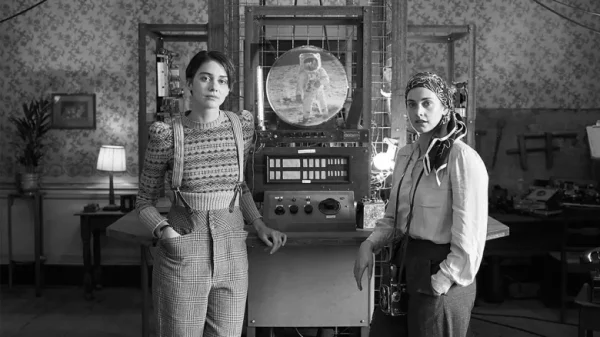
LOLA
Directed by Andrew Legge
Now, this was more immediately appealing. It’s 1941, and sisters Thomasina and Martha (but mostly Thomasina) have created a machine that can intercept broadcasts from the future. Named after their mum, the titular machine offers them a way of making money and learning about the world yet to come. It starts innocently enough, with them boogying to David Bowie, but as the second world war intensifies, things get darker and more morally complex as they ask questions about what they can change. Told in found footage, via old movie reels found in a deserted house, it’s a delicate fusion of small-scale sci-fi and huge implications.
Legge has some fun with the premise, and there are lots of dun mock-up papers, posters, etc. Along with a fascist popstar and a terrific sequence where the sisters’ singsong gives the country a new motto. In some sense, it watches as a celebration of counterculture movements and the power and beauty of music. However, for the most part, this is a horrific, cautionary story about obsession and playing God. It’s fast-paced throughout – perhaps a little too fast towards the end – but Legge never loses sight of its heart: the relationship between the two siblings. They supply an emotional core, and while we see disagreements regarding some of their values and visions for Lola’s potential, they share a relatable warmth. I also liked watching the budding relationship between Martha and lieutenant Sebastian Holloway – essentially acting as their minder.
There’s a lot about men getting in the way and even taking credit for their work. From the military to Churchill himself, they all want recognition. However, they want none of the blame, as we deviate further into conjecture and the country slips into chaos. The footage for these bits looks very authentic, having been shot with a Bolex 35mm camera to give it an old-fashioned, grainy aesthetic to match the period. Much of it is deeply disturbing too: the grave consequences of a few bad decisions that awaken far-right tendencies in the Brits. How quickly the country changes is frighteningly plausible and the doctored footage, which it leans on in the second half, is very convincing. The road less time travelled. Then there’s a brilliant soundtrack by The Divine Comedy’s Neil Hannon – a creative mix-up of 40s instruments, jazz tunes, and 60s/70s synth pop. An entertaining, enlightening, and timely Pandora’s box of paradoxes and bad politics. The highlight of the day so far.
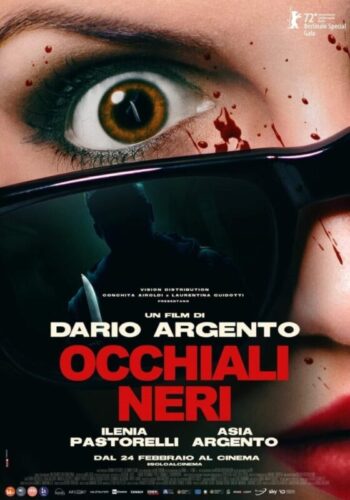
DARK GLASSES
Directed by Dario Argento
A legend is in the house. Look, it’s 2022: we wouldn’t reasonably expect this to be Argento’s best work. But at this point in his career, if it’s his best one since the last good one, then that’ll be enough. Dark Glasses is a classic Giallo premise: Diana, an escort, is blinded during a car accident when trying to escape a murderer who has offed three other sex workers with cello strings. After a client who smelt of dog and an aggressive one who wanted to fist her violently, this is the cherry on top of a bad day. Still, Chin had a worse one; he’s a young Chinese boy who lost his parents in the same crash. He and Diana form a surrogate mother and child relationship, relying upon each other for support. And while Argento doesn’t go anywhere especially interesting with it, it’s a novel dynamic that gives some much-needed stakes to a movie where the main characters are largely passive – reacting to events rather than shaping them.
There’s almost no proactive investigative element, with most of the running time involving Diana adjusting to her condition and role as a guardian. The police procedural occurs in the periphery, and the killer’s identity is incredibly obvious to anyone even half-watching. Sure, it’s fun to see their white van lingering in the background, gliding around like the shark from Jaws, but they have almost no apparent motive. However, the sweet and unexpectedly sentimental relationship meant I was invested in the outcome – even if the denouement required one of them to break character for a nonsensical decision, they immediately go back on. This is some work as what ought to be a tense third act unfolds as a dull farce in a series of baffling creative choices. Hell, at one point towards the end, the leads take a ten-minute walk in the woods as the killer wrestles some random passers. Before an unintentionally funny plot device further undermines what little agency they are given. Still, technically it’s very accomplished. Dario is highly cineliterate and, in the best bits, evokes the dreaminess of his past glories. He’s also great at lighting – especially night scenes – and shows his usual knack for framing. The soundtrack is also sublime, combining the familiar synth with thumping dance beats. They add a sense of much-needed urgency to the handful of otherwise tedious scare sequences.
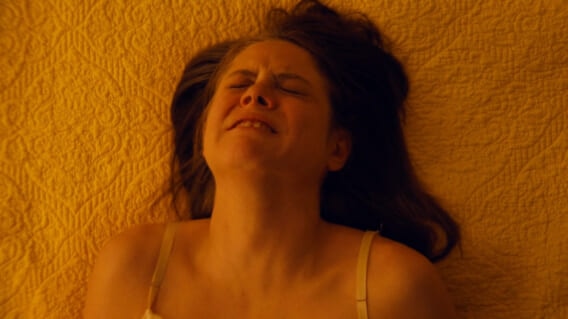
CANDY LAND
Directed by John Swab
A tribute to 70s exploitation from the director of Ida red. Candy Land follows a seemingly naive and devout young woman, Remy, who is forced out of her religious cult. Abandoned, she makes new friends who help her find her way in the underground world of truck stop sex workers, a.k.a. “lot lizards.” Under the watchful eye of their madam Nora and enigmatic local lawman Sheriff Rex, she tries to find her true calling in life. It’s almost two movies in one that fuse seamlessly. The first half watches like a hangout movie – mostly sex workers shooting the shit about their jobs and the many things they’d rather be doing than turning tricks. Acting is believable across the board, and the snappy dialogue has an uncompromising and realistic rawness. There’s a warmth and sisterhood to these scenes (though there’s a guy there too: Levi), and I can only expect writer/director John Swab did a tonne of research into terminology and tips of the trade to sell it so well. I warmed to the characters and enjoyed seeing Remy get gradually forced out of her shell.
Then the second half comes – a gory, exploitation flick where the characters we care about are in increasing danger. No, it isn’t full grindhouse – being too character-driven to lapse into ridiculousness – but fire this on with X, and you got a hell of a double-bill. I won’t go into the villain’s motive, but it’s superbly handled and totally in line with the themes developed in the earlier sections. All kills and corpses look good, and Swab is sympathetic enough to his characters not to make them gratuitous. It’s a low body count, which is inevitable since there aren’t many characters, but you feel every one of them. I was also impressed with the sense of location: a truck stop in the middle of nowhere. A place people stop off at on their way to somewhere else – these characters are static. Death and despair are juxtaposed with a beautiful, bright aesthetic – an ironic subversion of the American Dream. Things wrap up well, with a characteristically uncompromising finale. An excellent ending to a mixed day.





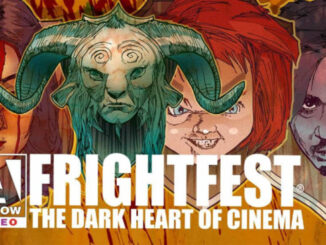
Be the first to comment